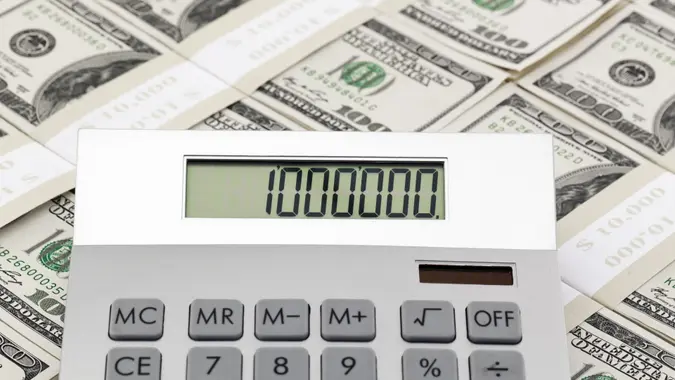The Most Truly Passive Income You Can Make, According to Money Coach Chloe Daniels

Commitment to Our Readers
GOBankingRates' editorial team is committed to bringing you unbiased reviews and information. We use data-driven methodologies to evaluate financial products and services - our reviews and ratings are not influenced by advertisers. You can read more about our editorial guidelines and our products and services review methodology.

20 Years
Helping You Live Richer

Reviewed
by Experts

Trusted by
Millions of Readers
Chloé Daniels is an online money coach, with 200,000 followers on Instagram. She shares finance tips with her audience and also sells access to her course called “The Lazy Investor,” where she teaches students how to manage their money and invest in index funds.
She recently shared some thoughts about what’s traditionally thought of as passive income vs. what she believes is the best form of passive income — investing in the the stock market.
What Is Passive Income?
Passive income is often described as any venture or business that “makes you money while you sleep.” Simply put, it means something other than a regular full-time or freelance job where you trade your time for money.
The upside of passive income is that you can typically scale up without putting in more hours or raising your hourly rates. Examples of passive income are a real estate investment, selling a digital or physical product, and creating content that pays you more money the more it is viewed.
While passive income does mean that the amount of time you put into working and the money you get back aren’t directly linked, it’s not usually “set it and forget it.” You will probably have to put a lot of hours into it before it reaches a point where it makes you money on its own.
However, depending on what you do, if you do manage to get a passive income stream to work, you might be able to only put in a bit of time now and again to maintain it. Then you could move on to another job or project.
Passive Income vs. the Stock Market
Daniels argues that investing in the stock market is a much better form of passive income since it can be passive from start to finish. For example, you put money into an index fund regularly and then keep it there until you retire.
She said, “Every time I see people talking about passive income like courses, real estate, e-books, blogs, etc … It makes me laugh. That [stuff] isn’t passive. It’s a TON of hard work up front, and someday — hopefully it becomes passive. The most truly passive income you can make? It’s investing in the stock market.”
Of course, while Daniels does talk about e-books and courses here, she herself sells a $1,097 investing course on her website, which includes e-books and guides. If you want to follow her example, it’s clear that it’s not one or the other. Investing is something everyone should do, while a business or side hustle can be a great way to make extra money so you can save and invest more. Investing in a low-cost index fund is one of the most passive ways to make money, but you do need to have some money in the first place to invest.
You don’t have to have a great job to invest for retirement, though. If you start early enough, even $100 per month can add up. For example, if you invested $100 every month into the S&P 500 for 44 years between January 1980 and January 2024, you would have over $1.1 million today, despite only investing $52,800 total. That’s thanks to the power of time and compound interest.
However, the more you invest in the stock market, the more you’re likely to get back. Since you will need to work anyway, focusing some of your time on creating a passive income stream can be a great way to increase your total income now.
Business vs. Stock Market Risk
While starting a small business or side hustle can be a great way to supplement your income, it’s important to be aware of potential risks. When you create a product or service, you have no guarantee that anyone will actually use or buy it. It’s possible to invest a lot of money into something that goes nowhere.
Investing in individual stocks can be quite risky, but putting money into a diversified index fund is much less so. An index such as the S&P 500 has historically gone up over the long term. In some years, your investment may go down and in others, it may go up, but over the past 50 years, you would have made an average of 11.86% each year. As long as you are investing for the long term, an index fund is generally low risk.
Keeping this in mind, it’s probably safest to put most of your money into investments like index funds and bonds and only invest what you can afford to lose into something riskier like starting a business or side hustle.
More From GOBankingRates
 Written by
Written by  Edited by
Edited by 

























